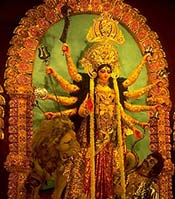As I faced it, looking up
Clenching my fist
I hit on the wood – knocking many times
The raw surface, nicked at my flesh
My palm hurt and so did my being
How long I stood
Not hungry, no food
Not thirsty, no water
The door was shut
As I faced it, looking up
There was no roof
And to the side
There was no window
Just a vast expanse
Can someone hear me?
Or maybe see me?
Waiting still, knocking some more
The door was shut
As I faced it, looking up
The pounding on the door
Echoed my beating heart
Yet I heard nothing
Just straining my ear
For a response from
The other side
Breathing the still, dark air
The door was shut
As I faced it, looking down
My shoes are not buckled
No sticks to pick up
No chore, no hen but I hear the crows
The sun yawns
The door looks luminous
As the light washes us both
The door and I are one
The door was shut
As I faced it, looking down
Soaking the morning sun
Changed in demeanor
The door and I – severed from trees
No roots, nor branch
No life in the door as I breathe
And stand still with time









